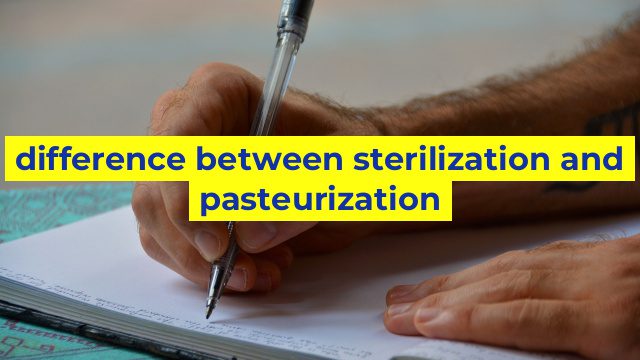Differentiating Between Sterilization and Pasteurization
When it comes to preserving food and consumer products, sterilization and pasteurization are two popular methods that are often employed. Although the two terms are commonly used interchangeably, they have distinct meanings and applications. In this article, we will take a closer look at the differences between sterilization and pasteurization, their processes, and their uses.
What is Sterilization?
Sterilization is a process used to completely eliminate all types of microorganisms, including bacteria, viruses, and fungi. It is considered the most effective means of achieving total destruction of microorganisms. Sterilization is mainly used in the medical field to sterilize equipment, surgical instruments or apparatus to prevent infections. Also, it is used in the food industry to extend the shelf life of products, eliminate harmful bacteria in food and preparing packaging material with a clean and germ-free surface.
The most common methods of sterilization are steam sterilization, dry heat sterilization, and chemical sterilization. Steam sterilization involves exposing instruments to high pressure and temperature of steam to kill microorganisms; dry heat sterilization kills microorganisms through extreme heat in a dry atmosphere, while chemical sterilization uses chemicals such as ethylene oxide to rid instruments of microorganisms.
What is Pasteurization?
Pasteurization, on the other hand, is a process used to heat products for a limited time, typically between 60 and 100 degrees Celsius, in order to kill pathogenic microorganisms, while retaining the quality and taste of the product. Unlike sterilization, pasteurization does not eliminate all microorganisms, but rather reduces their population to levels considered safe for human consumption.
Pasteurization is employed in the food industry to preserve milk, fruit juices, beer, and other liquid products. It is also used in egg processing to eliminate the risk of salmonella contamination. Two of the most popular methods of pasteurization are high-temperature short-time pasteurization (HTST) and ultra-high-temperature pasteurization (UHT). HTST pasteurization involves heating the liquid product to a high temperature for a short period, while UHT pasteurization involves heating the product for longer periods, up to 135 degrees Celsius.
Summary
In conclusion, sterilization and pasteurization are two distinct processes that are widely used in the medical and food industries. While sterilization kills all forms of microorganisms, pasteurization is used to reduce pathogenic microorganisms to safe levels while retaining the quality of the product. Both processes have their unique applications and benefits, and the choice of which method to use depends on the specific needs of the product and end-users.
Table difference between sterilization and pasteurization
| Parameter | Sterilization | Pasteurization |
|---|---|---|
| Definition | The complete destruction of all microorganisms, including spores. | The process of heating a substance at a lower temperature to kill harmful microorganisms. |
| Objective | To make the substance completely free of microorganisms and their spores, ensuring maximum safety. | To decrease the microbial load in the substance to a level that is safe for consumption or use. |
| Method | Usually done by exposure to high temperatures, chemicals, or radiation. | Usually done by heating the substance for a specific duration of time at a specific temperature, depending on the type of microorganisms present. |
| Examples of substances | Medical equipment, surgical instruments, food that needs to be stored at room temperature for a long time, and so on. | Dairy products, fruit juices, canned food, and so on. |
| Effectiveness | Extremely effective. | Effective but does not kill all microorganisms. |
| Time taken | Takes a longer time as compared to pasteurization. | Takes a shorter time as compared to sterilization. |

